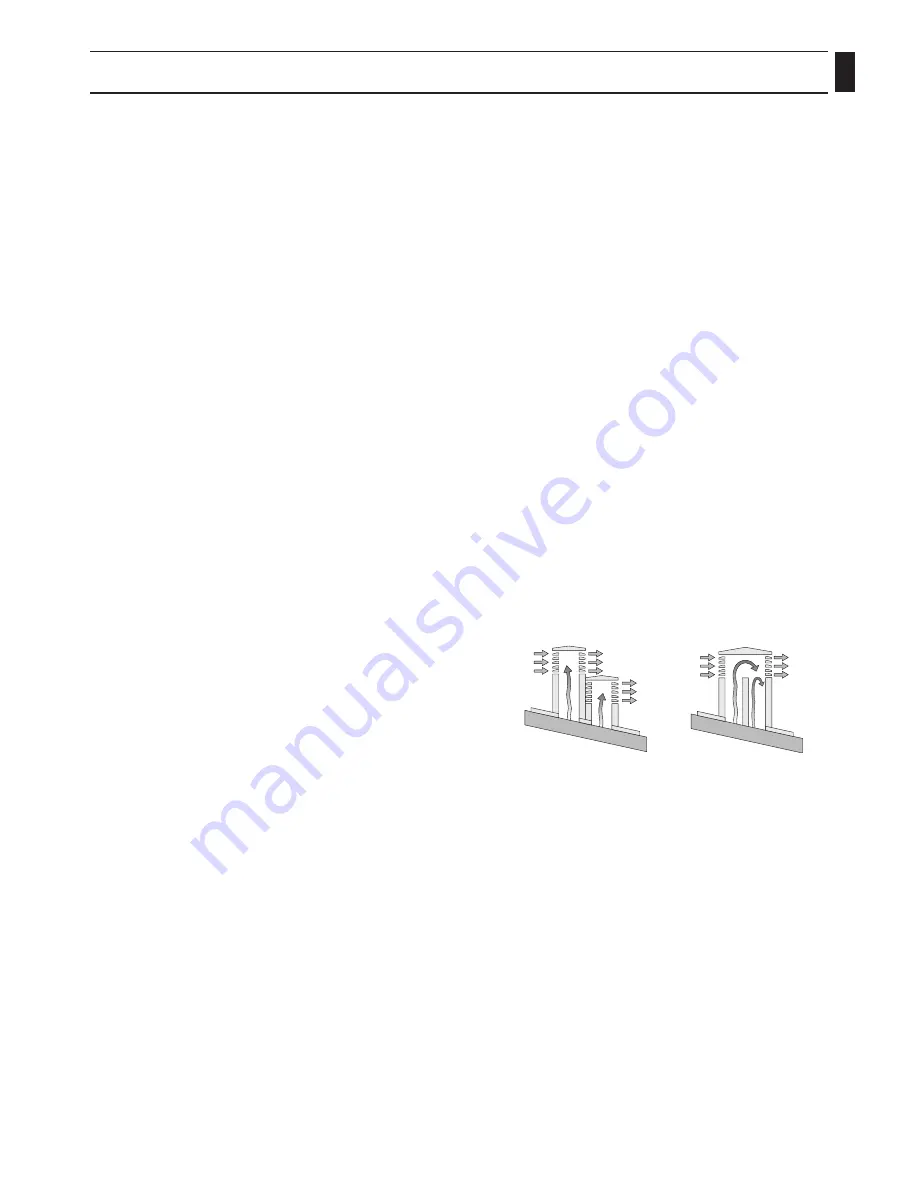
GB
Installation
Canalisation (if available)
Before you connect the auxiliary pipes for the canalisation
of the air, please check that:
• the canalisation system is according to law.
• the system does not present any obstructions.
• once you connect the stove and switch on the
auxiliary fan, there is a regular air flow at the end of the
canalisation.
• you can use up to two hot air delivery pipes with a
maximum lenght of 4 m. each. If you use only one pipe,
the maximum lenght is 5 m. In this second case, the
unused outlet must be properly blocked.
• The piping and conduit must be protected with fixed,
non-reclosable grids or suitable covers. The minimal
section must not be reduced anyway.
• Both the piping and grids must be made of a material
able to carry hot air up to a maximum temperature of
80°C.
• Every device must have its own flue with a
diameter equal to or larger than the stove’s
smoke clearing tube and a height not less
than that declared.
• Never use two stoves, a chimney and a stove,
a stove and a wood kitchen, etc in the same
environment, since the draught of one could
damage the draught of the other.
• Collective type ventilation ducts that can
lower the atmospheric pressure in the
installation environment are not permitted,
even if installed in environments that are
adjacent to and communicating with the
locale of the installation.
• It is forbidden to make fixed or mobile
openings in the flue to connect devices
different from that for which it is originally
intended.
• It is forbidden to pass other air feeding
channels or tubes for electrical system usage
through the flue, even if oversized.
• It is advisable that the flue be furnished with
a chamber which collects solid material and
eventual condensation situated below the
vertical entrance to the flue so that it is easily
opened and inspected through the air-tight
door.
• Whenever flues with parallel exits are used it
is advisable to raise the upwind chamber by
one element.
• The chimney tube must never pass across a
combustible surface.
The Chimney Cap
The chimney cap must respect the following
requirements:
• It must have the equivalent diameter and
internal form of the flue.
• It must have a useful outlet diameter of not
less than double that of the flue.
• The chimney cap on the roof or that remains
in contact with the outside (for example, in
case of open lofts or attics), must be covered
with elements in brick or tile and must, in any
case, be well insulated.
• It must be constructed to prevent rain, snow,
and extraneous bodies from entering the flue
and so that the discharge of the products of
combustion is not inhibited by wind from
any quarter or strength (wind-proof chimney
cap).
• The chimney cap must be positioned in such a
way as to guarantee the adequate dispersion
and dilution of the products of combustion
and in any case, must be out of the reflux
zone. This zone has different dimensions and
forms according to the angle of inclination of
the roof so it is necessary to adopt minimum
heights (Fig. 2).
• The chimney cap must be a wind-proof type
and must be above the ridge.
• Eventual structures or other obstacles that
are higher than the chimney cap must not be
too close to the chimney cap itself.
Fig.2: characteristics of the chimney cap
YES
NO
Summary of Contents for CentroPelet ZS10
Page 11: ...GB Notes ...






























